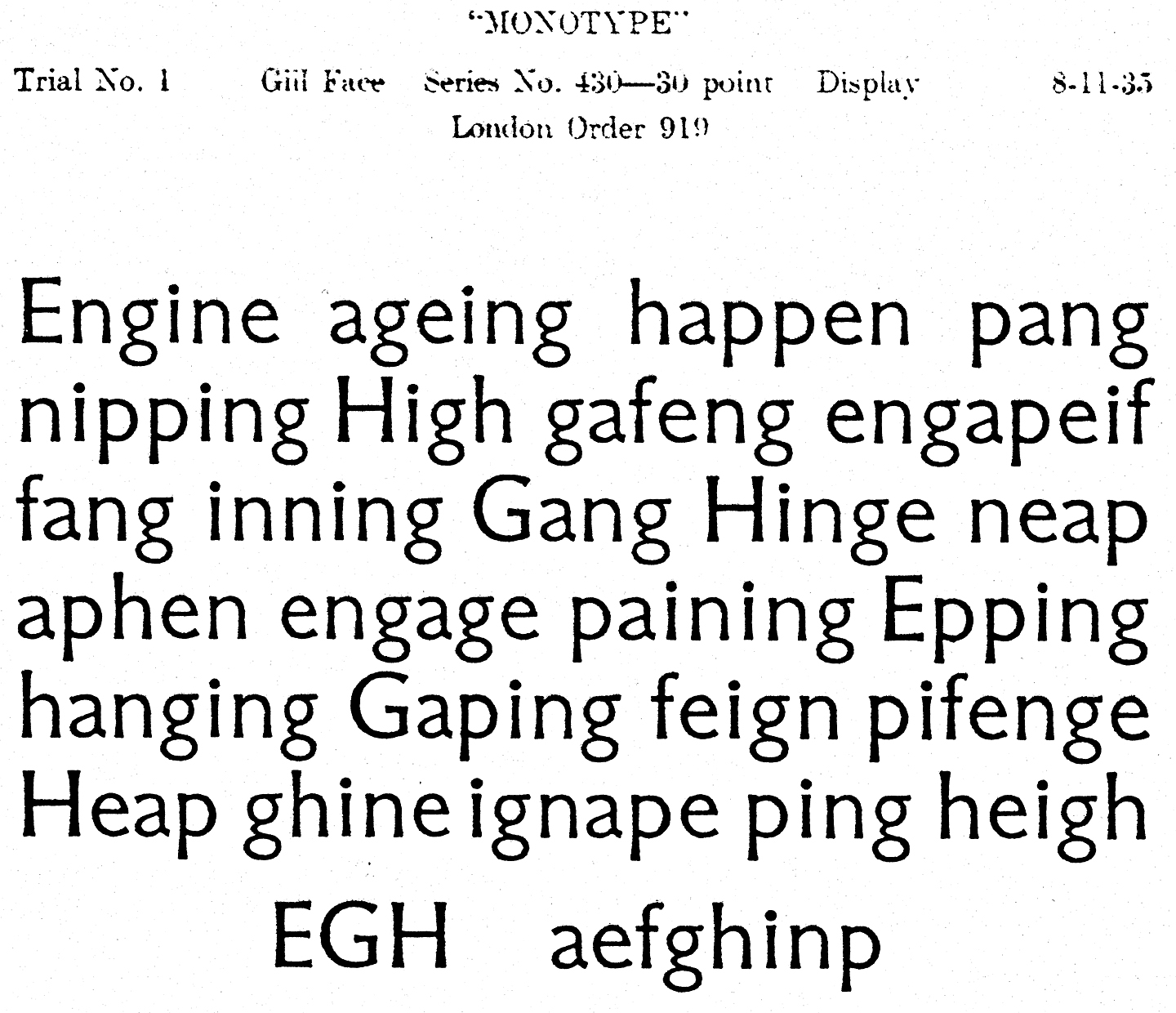Note: This is really a response to a question posed in this Typophile thread, but I’m also jotting down some info here so I can find it more easily some day.
In September 1935 Gill drew for Monotype a stressed sans-serif type with many prophetic qualities: it looked forward to Hermann Zapf’s ‘serifless roman’ Optima of nearly a quarter of a century later. Although it was given a series number (430), and a few trial sorts were cut, it was never issued to the trade.
— Sebastian Carter, Twentieth Century Type Designers
I dug around a little bit in the archives at Monotype and was finally able to track down a few traces of the Eric Gill‘s unreleased Series 430, a slightly flared sans serif in the Optima/Albertus mode, made at 30 point.
First of all, here’s a scan of a photocopy of the trial print, a test setting a few characters cut to show the basic relationships of caps to lowercase, round shapes to vertical strokes, and the cap and x-heights to the ascenders to descenders. I wasn’t able to track down the original print made from the sorts themselves, but this still shows where the design was headed:

The caps look pretty heavy compared to the lowercase letters, at least for my taste, and I can’t say I love the overall feeling. It certainly does feel like Eric Gill’s work, though. Maybe that’s part of the trouble: it reminds me too much of others typefaces of his, without having quite enough character of its own. Some of the other glyphs are more distinctive, but since not all were cut for the trial it’s difficult to say if they would have helped the overall feel.
Continue reading “Unreleased, untitled Gill typeface”

